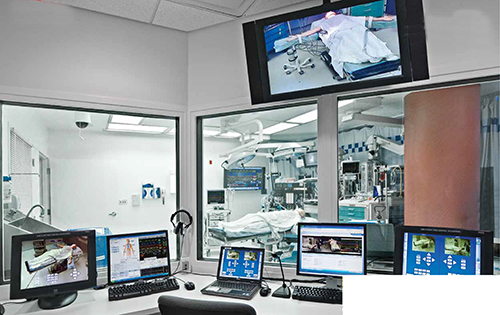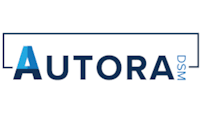View of the control space looking into the operating room simulation center at Johns Hopkins. Photo courtesy of Human Circuit. Just in case your mother forgot to tell you, staring into a crystal ball for too long can give you a headache. Instead, prepare yourself for the future of healthcare technology for 2013 and beyond. AV tech managers, integrators, and consultants will want to consider, among other aspects, convergence, growth in telemedicine projects, and the importance of collaboration between hospitals and medical specialties, all of which can impact the bottom line.
“I don’t think 2013 will be a revelatory year with a big explosion of opportunities on the horizon. Rather, it will be a year when the market starts to recognize AV-IT convergence,” says Mark Valenti, president/CEO of The Sextant Group, headquartered in Pittsburgh, PA. “As an industry, we’re a bit hobbled by regulatory issues such as HIPAA, and integrating AV systems with healthcare IT has been challenging.”
What Valenti garners from his own clients tells him that, in a world of rapidly evolving technology, buyers recognize an opportunity to do things differently. “I see those opportunities coming in 2014 and 2015. So 2013 will be a year to learn as hard and fast as you can, and to get ready.”
It’s a given that one of those opportunities is in telemedicine as hospitals add dedicated facilities where specialists provide remote consultations over videoconferencing. The combination of more efficient real-time video CODECs with cheaper and more available internet bandwidth is a driving force, says Jim Hatcher, CTO of Human Circuit in Gaithersburg, MD. Some 40 percent of the design/build firm’s revenue is in healthcare, mainly in simulation centers for clients such as Johns Hopkins, Washington University, and Howard University.
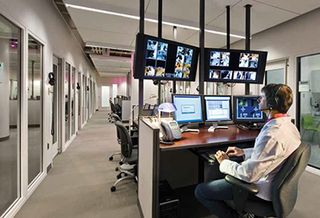
Instructor observing activities within the clinical skills exam rooms at Johns Hopkins. Photo courtesy of Human Circuit. “The need exists for more collaboration between teaching hospitals and the specialty disciplines to build knowledge bases,” Hatcher says. “If there is a center of excellence for heart surgery, for example, with a new procedure, it can be viewed online for other surgeons to watch through high-definition recording, creating an archive of information on new techniques and advances specifically designed for teaching.”
The potential AV integration project is in building the infrastructure that supports these knowledge bases with the recording, the editing, and posting of the video. This information also could be sold as revenue for hospitals.
“Another opportunity is in remote care/patient diagnostics with VTC connectivity into and from the home,” Hatcher adds. “There are two aspects; human-to-human contact, and biometric data coming from equipment in the home.”
Remember the Patient
The inquiries Valenti has received over the past 18 months are focused not on telemedicine and videoconferencing, but in a patient-centered approach, at the core of which is AV.
In his presentation at the National eHealth Collaborative and InfoComm Technology Crossroads Conference in Washington, D.C. last month, Valenti concluded that smart room technology, essentially integrating patient services, local environmental control, entertainment, education, electronic health records, and real-time patient data in an integrated control and audiovisual environment, is the next “edge.”
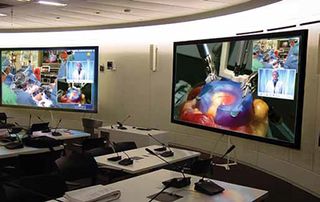
Photo of University of Alberta, Alberta Heart Institute/Capital Health, Centre of Excellence, Edmonton, Canada, courtesy of The Sextant Group. “Many companies and institutions are trying to establish a foothold in the smart room market from a healthcare perspective, not from the integrated AV perspective,” he says. “One company I visited approaches technology from a nurse-centric, not a patient-centric, point of view, and I believe they’ve missed the user experience.”
In addition, beyond technology trends, issues specific to healthcare such as patient satisfaction and outcomes have a direct effect on reimbursements to medical and healthcare concerns. “There are technology layers that can be put into place that will help with both and provide a real ROI,” says Human Circuit CEO Bruce Kaufmann. “Some people worry about the use or adoption of technology by the aging population, which could affect IPC (Interactive Patient Care). But it appears that there is little or no concern about baby boomers and members of younger generations who are okay with technology and have used it enough in their careers. It’s going to cause a ‘stutter step’ for facilities because they can’t use it successfully with the elderly part of the population, but the adoption rates are still high enough to justify expenditures.”
The Personal Touch
No matter how advanced, technology has to be supplementary to primary personal contact — face time — with a healthcare provider. “Tech can be used in aftercare follow-ups, but as a primary delivery method of healthcare, it would be ineffective,” Kaufmann says. “Integrators can’t overstate what tech can do; it must be represented as a bonus that can make things more efficient and increase patient satisfaction. It will not replace what practitioners can provide face-to-face, even in rural medicine settings where telemedicine is growing.”
Integrator Caveats
A big advantage to telemedicine is that it knows no borders. This, however, begs a question about defining the point-of-care, which can be an overlooked but important piece of the integrator puzzle.
“If I’m a doctor in California, do I need to be board certified in Maryland to consult there? What today’s technology brings will revolutionize the way we think about medicine,” Hatcher says.
Laws and regulations are governed state by state. Recently, Maryland insurers did not want to issue malpractice policies to doctors providing video consultation or diagnosis. “They were overruled by the state, but this issue has yet to be addressed across all 50 states,” Kaufmann explains. “Integrators have to be aware of these issues in order to provide the best advice to their clients. There are serious dollar consequences if the wrong advice is provided.”
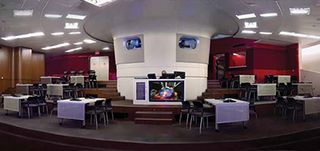
Photo of University of Alberta, Alberta Heart Institute/Capital Health, Centre of Excellence, Edmonton, Canada, courtesy of The Sextant Group. The Affordable Care Act, and the lack of a comprehensive understanding of its impact, presents another concern, says Kip Kendrick, business development manager AVL for Walker Engineering in Irving, TX. “We do know that some basic changes to funding have a real impact on building technologies,” he says. “We are just beginning to understand patient satisfaction; through interactive services, hospitals are graded on the positive or negative responses to care that the patient reports.”
Integrators, designers, and manufacturers need to embrace this system of client/patient/guest interactive services and hospitals need to find AVL (audio, video, and lighting) leaders who understand how to deliver video content for patients.
“We have been doing this in hotels for years,” Kendrick says. “Hospitals need IT leaders who understand how to give patients access to email, Facebook, Twitter, and even the dreaded bandwidth hog Netflix, so that the patient has the common outlets they might at home.”
The next few years are going to be integration driven. “The days of disparate systems taking up separate pathways and data input are gone,” Kendrick adds. “Directly or indirectly, the Affordable Care Act is making us look at all the places we store patient data and how all of these systems work together for the successful care of a patient.”
Systems that do not share data well might increase risk. “Manufacturers must drop the proprietary approach to data, and find ways to protect their investment, but release the common data source files.”
If all this is a lot to consider as you toast 2013, Valenti has summed it up nicely: “Opportunities will emerge for the right integrator to partner or lead a smartroom solution as long as the provider is healthcare savvy. There are companies out there dedicated to the traditional healthcare spot; their core business may not be AV, but they have significant resources working in the AV space. If you, as an integrator, think this is an important market for you, then educate yourself because the chance to do that will go away in the next 12 to 18 months.”
Karen Mitchell is a freelance writer based in Boulder, CO.
Sound Off
It’s the five-letter word that many take for granted in the healthcare realm: Sound. Kip Kendrick is out to adjust that attitude in 2013.
“The evolution of the hospital environment must include systems that use better notification methods than just sound,” he says. “The noise levels in all of our environments contribute to stress levels in ways we do not even recognize.”
As an example, Kendrick cites a recent holiday shopping foray to a large chain store. “They had great Christmas music playing to put you into the buying mood, but this store had a problem with volume/gain imbalance and the music was greatly distorted. It made us edgy and ultimately drove us out of the store.”
He likens the experience to hearing the constant beep so common in hospital settings. “I have seen studies of how quieter hospitals relax the patient and even the visitors, and that must be good. With all the technology in hospitals today, there are better ways to send an alert to the correct person if we think outside the box.”
Examples include nurse call systems. By routing panic button code through to the hospital wireless phone system, response policies can be set so that if the call is not answered in three rings it rolls over to a group of nurses. If there is no response, an audible tone is sent out in the area.
“This system could also track how quickly things are being managed for the patient satisfaction and staffing needs,” Kendrick adds. “The TV systems could provide calming channels much like those in today’s hotels. Lobbies could have quiet zones with sound absorption paneling.”
Then there’s the paging system. “As an audio guy, I must plead for us to promote professionally recorded messages for hospital common code calls,” he says. “This is so easy to do, and all of the modern systems allow the loading of files. This helps provide a consistent, well enunciated, and balanced interruption. If we do this, we can also provide instruction in a second language.”
—K.M.
